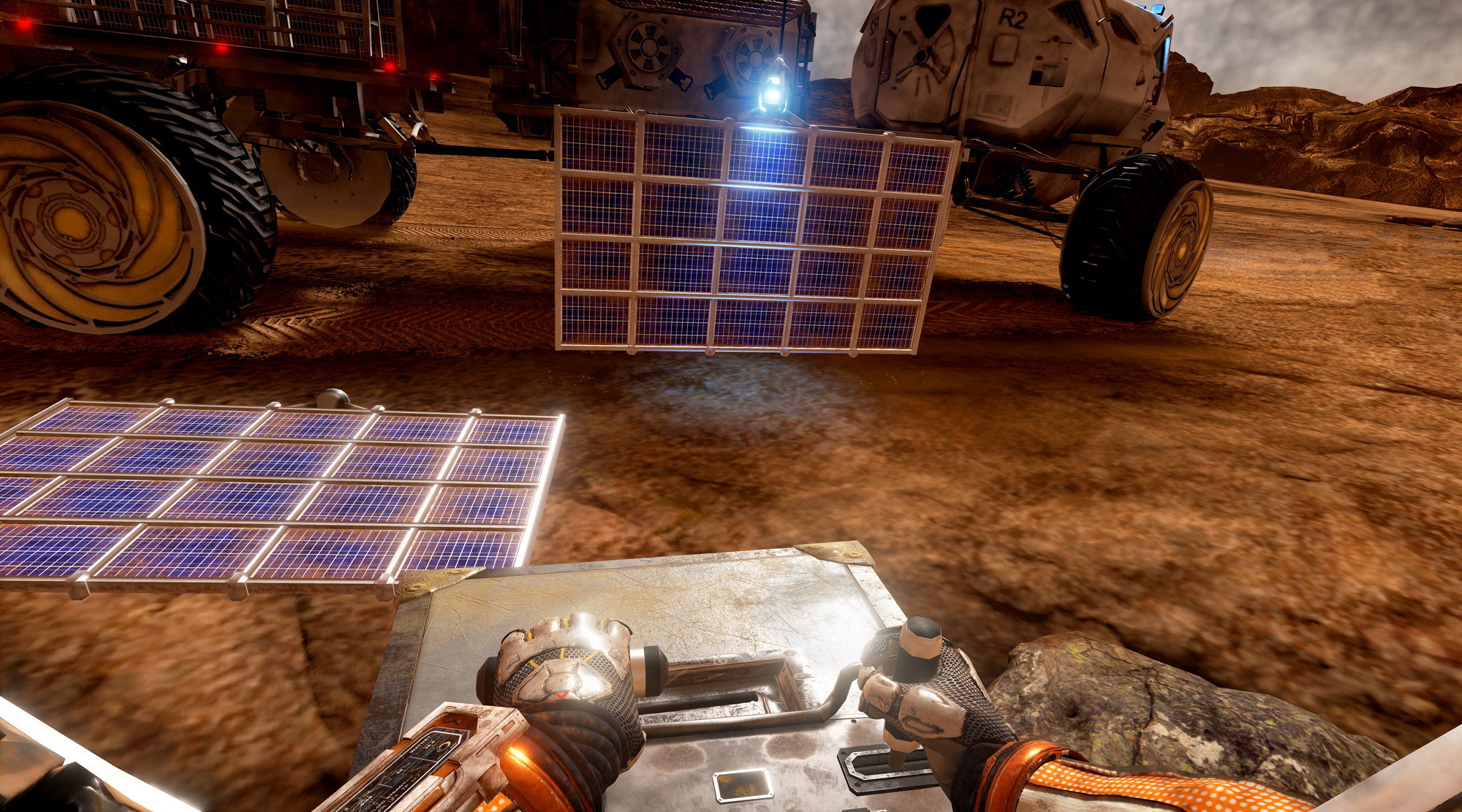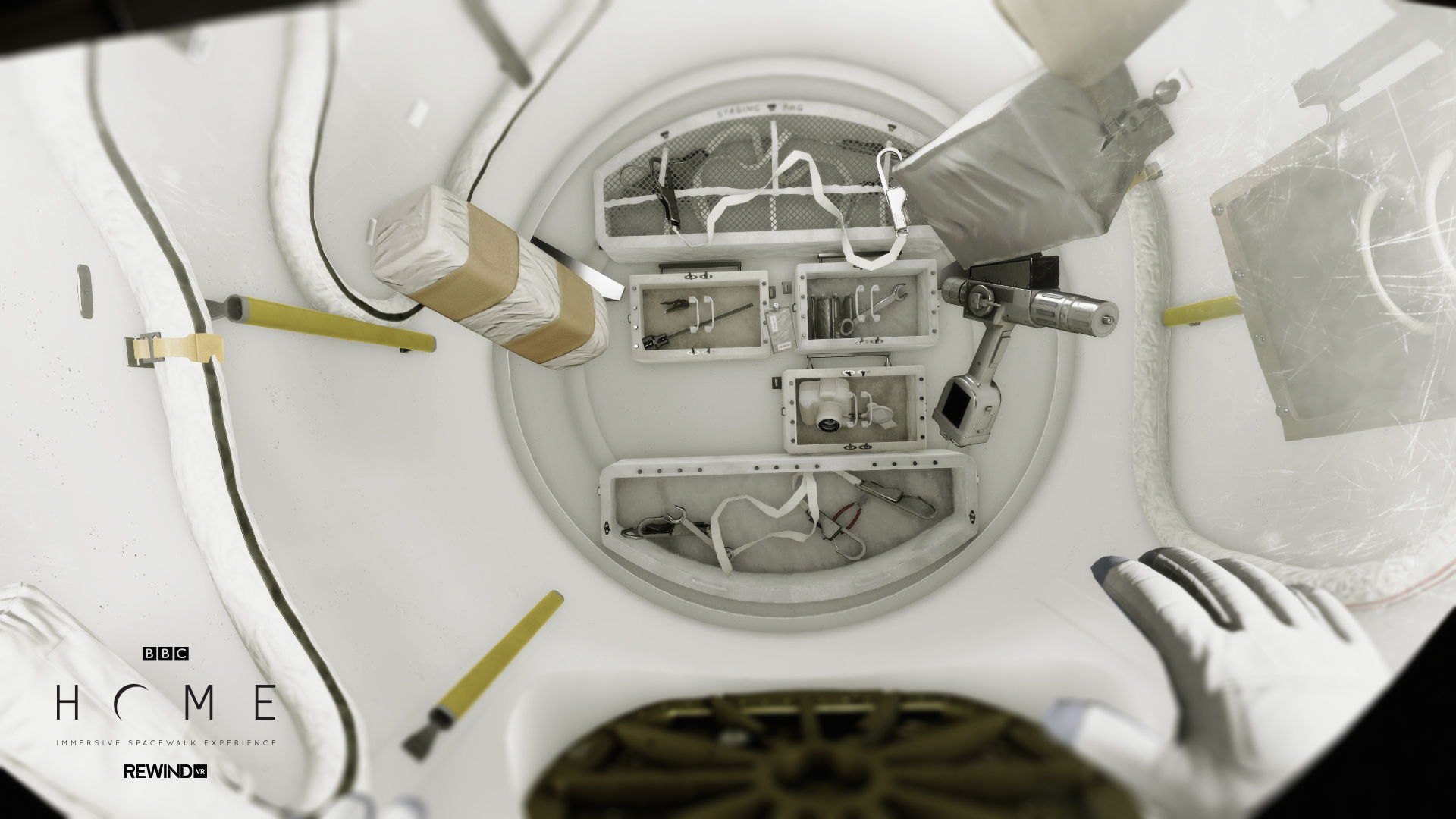How VR will make astronauts out of all of us
It’s clear that VR has an important role to play in the future of space exploration – but what can it offer the vast majority of us who will never get the chance to travel into space for real?
Life on Mars
Thanks to Elon Musk’s bold plans to colonise Mars and Ridley Scott’s 2015 movie The Martian, starring Matt Damon as an astronaut marooned on the Red Planet, one area of space exploration that’s captured our imagination as much as it interests Nasa scientists is the opportunity to walk on Mars.
Nasa’s aforementioned OnSight technology, which is being used by scientists to get a better spatial understanding of the Martian landscape, is also being used to give visitors to Nasa a tour of Mars hosted by a holographic Buzz Aldrin, the second man to set foot of the Moon after Neil Armstrong.

Meanwhile, several companies are vying to offer the most compelling Mars exploration experience in our cinemas and living rooms. One, based on The Martian, has been created in a collaboration between Fox Innovation Lab, Twentieth Century Fox’s research and development centre, RSA Films and The Virtual Reality Company.
“I’ve always tried to approach filmmaking from the standpoint of creating an immersive experience.”
Ridley Scott
Called The Martian VR Experience, it turns Mars exploration into an entertainment form that’s set to put space movie experiences so far to shame. Ridley Scott worked as the executive producer on the project, which enables viewers to step in the shoes of Damon’s fictional astronaut Mark Watney. They can then explore, perform tasks, drive a rover and experience key scenes from the film first-hand.
“I’ve always tried to approach filmmaking from the standpoint of creating an immersive experience. Now, with the tools that are available to us in virtual reality, we can raise the bar even higher,” Scott says of the project. “The audience can experience storytelling in ways we previously could only imagine.”
Available for PlayStation VR, Samsung VR and the HTC Vive, The Martian VR Experience proves there’s huge potential for space to not only educate and excite us, but entertain us too.
Sign up for breaking news, reviews, opinion, top tech deals, and more.

Also in the works is Mars 2030, a VR experience developed Fusion Media, MIT's Aeronautics and Astronautics department, Nasa, and designers from Bioshock Infinite, which is designed to simulate the first Mars landing, due to take place in – you guessed it – 2030.
Created to play nice with a number of consumer headsets, including PlayStation VR, Oculus Rift and Google Cardboard, it will allow anyone to explore a 7.7-square mile interactive Martian environment based on Nasa’s models of the planet.
You’ll be able to travel around on foot or in a rover, experience authentic gravity and realistic lighting, and even take part in missions. This fusion of knowledge, VR tech and gaming smarts could herald the way for a form of immersive entertainment that’s truly out of this world.
A walk in the void
Another space-based activity that production companies are working to turn into an immersive entertainment experience is the spacewalk – or EVA (extra-vehicular activity) to give it its proper title.
TechRadar spoke with Sol Rogers, CEO/Founder of creative digital production studio REWIND, about how his company created the recent collaboration with the BBC entitled Home – A VR Spacewalk. It’s an immersive, and randomised, VR experience that enables anyone to traverse the International Space Station, play with the robotic Canadarm arms attached to the ISS, and then jetpack back inside.

“The experience is developed in Unreal Engine 4 to push at the highest possible visual fidelity, and is accompanied with treated, spatial audio,” Rogers explains. “Much of the main structure of the International Space Station was constructed using a very practical reference: a Haynes Manual, the most detailed and accurate plan you can find.”
Rogers and his team were keen to turn the spacewalk into a fully immersive experience that engaged all the senses, not just those experiences through a VR headset.
“The ambient sound is spatial and creates the claustrophobia of the astronaut’s helmet and the unnerving sounds of your own body.”
Sol Rogers, VR production studio CEO
“We have integrated Bluetooth heart rate monitors that feed back into the experience, recreating the sound of your own heartbeat acoustically treated," says Rodgers. "This is combined with an integrated live mic for the user that is acoustically treated and delivered back into the experience, relaying the sound of their own breathing.”
“The ambient sound is spatial and creates the claustrophobia of the astronaut’s helmet and the unnerving sounds of your own body and your space suit's life support system. A gaming chair is also used to provide haptic feedback and to increase the level of immersion.
“Finally for selected live viewings we incorporate a live Voice Actor who plays a key role and is able to personalise and ad-lib on the script, conversing with the player and observing and responding to their predicament and heightening the realism and immersion.”
Replicating the overview effect
Whether Nasa is using VR to build new Martian worlds or REWIND is using a headset and the latest tech to replicate a spacewalk, it’s important to remember that there’s more to the experience of being in space than high-end visuals and realistic movements. Perhaps the most powerful experience that astronauts report when in space is the 'overview effect'.
Catherine Allen, a digital producer and director specialising in VR and AR for the BBC and others, describes the overview effect as “a powerful cognitive shift that astronauts report experiencing, after seeing the Earth from space”.
“Astronauts return to earth describing an overwhelming mental clarity; a true understanding of both our planet’s fragility, and the unity and interconnectedness of all life.”

But how do you even begin to create that same kind of feeling when you’re sitting in your front room with a VR headset on? None of the experts I spoke to had a definite answer, but all agreed that experimenting and engaging all of our senses as much as possible, and creating a hyper-realistic environment, will be necessary if we’re ever going to truly get a sense of space without being up there ourselves.
And the discussion highlights the point that, no matter how advanced the tech is, the real human experience element always needs to be front and centre when it comes to creating a VR environment that’s as realistic as possible.
“The overview effect is clearly life changing; it creates both a shift in world view and identity. I’m interested in how we can use the immersive, simulative power of VR to give audiences even just a taste to what astronauts go through,” Allen adds.
To infinity and beyond
The future looks exciting in terms of using VR to help all of us better understand space. We asked Catherine Allen what she thinks the future holds, and she said she’d love to regular people being able play a part in exploring the cosmos.
“360 cameras could be attached to space drones, which would be controlled in real-time by people back on earth wearing VR headsets," she said. "The controller on earth would ideally feel a real sense of presence, as if they were flying around themselves.”
She added that our view of space could change drastically as tech improves and more companies push to get VR cameras into the best locations.
“I’ve had chats about this with space scientists, and they’ve told me that the current technological barrier to work through is the internet delay. In order to achieve the feeling of presence, the travel would have to be in real time, or close to. It means we’re a way off real-time telepresence space exploration.”
“360 cameras could be attached to space drones, which would be controlled in real-time by people back on earth wearing VR headsets.”
Catherine Allen, VR producer
“However, there is exploration into this field already. For example, SpaceVR have paid NanoRacks LLC in a lump sum to launch a virtual reality camera satellite into Low Earth Orbit, and it is due to go up with SpaceX in June 2017.”
And Matthew Clausen of JPL told Space.com: “It's not just going to be the people at JPL, or at the other space centres around the country and around the world, but we imagine a future in which it's actually all of you; anyone that has access to this immersive technology, libraries, in their schools, in their basements, all being able to participate in the exploration of these new worlds together.”
The potential is huge. Regular people could soon see a spacewalk as a form of everyday entertainment, experience the awe-inducing effect of the overview effect, or actually help to make new discoveries in real-time.
And that's just the beginning. VR could eventually help us to boldly go where we’ve never gone before, and experience what it’s like to take the first few steps on Mars at the same time the very first astronauts do.

Becca is a contributor to TechRadar, a freelance journalist and author. She’s been writing about consumer tech and popular science for more than ten years, covering all kinds of topics, including why robots have eyes and whether we’ll experience the overview effect one day. She’s particularly interested in VR/AR, wearables, digital health, space tech and chatting to experts and academics about the future. She’s contributed to TechRadar, T3, Wired, New Scientist, The Guardian, Inverse and many more. Her first book, Screen Time, came out in January 2021 with Bonnier Books. She loves science-fiction, brutalist architecture, and spending too much time floating through space in virtual reality.